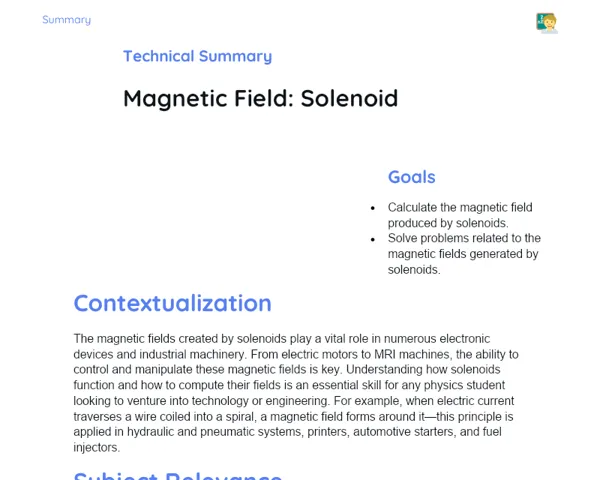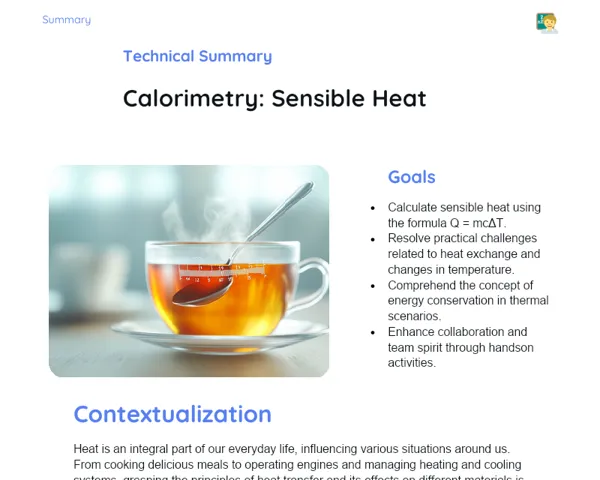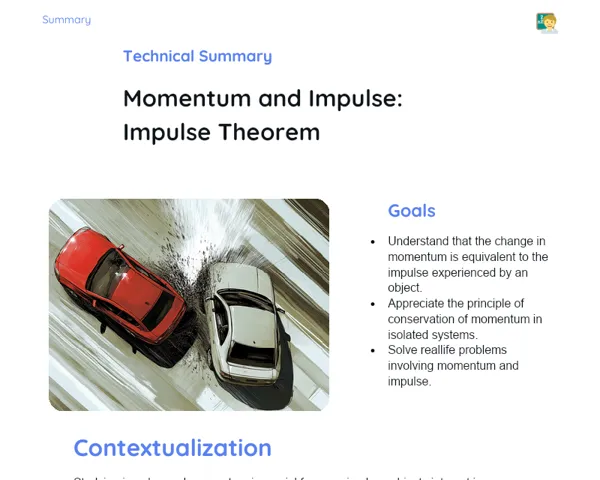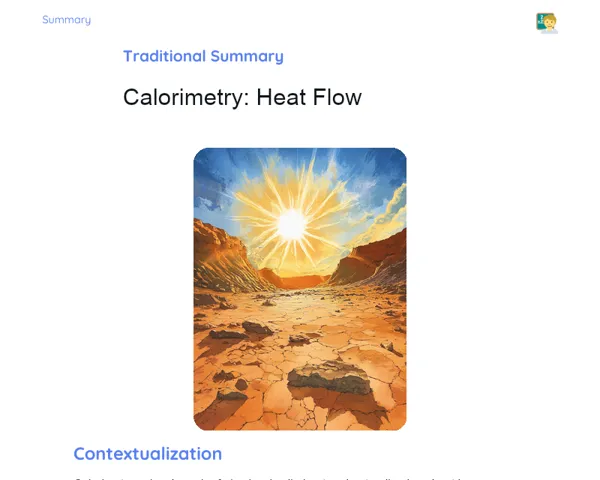Objectives
1. Grasp the idea of the average speed at which gas molecules travel and how changes in temperature influence this speed.
2. Develop the ability to compute the average speed of gas molecules using established formulas and practical data on pressure and temperature.
Contextualization
Have you ever noticed how balloons seem to swell more on a hot day compared to a chilly morning? This is because the molecules inside the balloon move faster when the temperature rises, causing the gas to expand. Understanding this phenomenon isn’t just fascinating—it’s also very useful in everyday applications, from weather forecasting to designing better building materials and machinery.
Important Topics
Average Speed of Gas Molecules
This concept measures how fast the molecules in a gas move around in a given space. Naturally, as the temperature goes up, the kinetic energy of these molecules increases, making them move faster. This is a fundamental idea in the study of molecular motion and is especially important when exploring the behavior of gases under varying thermal conditions.
-
Influence of Temperature: Temperature plays a key role by directly impacting the average speed of the molecules. When temperature increases, so does the average speed, following the Maxwell-Boltzmann distribution.
-
Calculating the Speed: You can determine the average speed using the formula v = √(3kT/m), where v is the average speed, k represents Boltzmann’s constant, T is the temperature (in Kelvin), and m is the molar mass of the gas.
-
Real-life Importance: Knowing how fast gas molecules move is crucial for many practical fields, including developing new gas storage solutions, predicting gas behavior in engineering applications, and even in weather studies.
Kinetic Theory of Gases
The kinetic theory explains that gases consist of small particles in continuous, random motion. According to this theory, the average kinetic energy of these moving particles is directly proportional to the absolute temperature of the gas. This helps us understand how everyday properties like pressure and volume arise from the underlying activity of gas molecules.
-
Continuous Motion: Gas molecules are always in motion, bouncing off each other and the container walls, which is what creates gas pressure.
-
Energy and Temperature: The theory confirms that as temperature rises, so does the average kinetic energy of the gas molecules, resulting in more vigorous motion.
-
Mathematical Insights: It provides us with a set of mathematical models to predict how gases will behave under different situations—a tool very handy in both academic studies and practical engineering projects.
Maxwell-Boltzmann Distribution
This distribution gives a statistical picture of the range of speeds of molecules in a gas. At any specific temperature, not all molecules move at the same speed; instead, their speeds vary in a predictable way described by this distribution. This helps us understand how gas properties like pressure and temperature are tied to the speeds and energies of individual molecules.
-
Understanding the Curve: The Maxwell-Boltzmann curve shows the likelihood of finding a molecule with a specific speed in a gas.
-
Effect of Temperature: As temperature increases, the spread (or standard deviation) of the curve widens, which means there is a greater variation in the speeds of the molecules.
-
Practical Use: This distribution is especially useful in real-world applications, like designing chemical reactors or studying thermal properties in both physics and engineering.
Key Terms
-
Average Speed of Molecules: A measure of how fast gas molecules move within a certain space.
-
Kinetic Theory of Gases: A concept describing gases as particles in random motion, which explains their bulk properties in a simple way.
-
Maxwell-Boltzmann Distribution: A statistical distribution that details how the speeds of gas molecules vary at thermal equilibrium.
For Reflection
-
How can a deeper understanding of the average speed of gas molecules contribute to advances in gas storage technology?
-
In what ways might the kinetic theory of gases be applied to enhance industrial processes that deal with gases?
-
How do temperature fluctuations affect systems that rely on gas behavior, such as combustion engines and refrigeration systems?
Important Conclusions
-
We examined how temperature impacts the average speed of gas molecules—a key element in understanding everyday phenomena like the expansion of balloons on hot days.
-
We also discussed the kinetic theory of gases and the Maxwell-Boltzmann distribution, which provide the theoretical framework for predicting gas behavior in various conditions.
-
Finally, we highlighted the practical applications of these concepts, showing that physics plays an important role in fields ranging from engineering to weather forecasting, right in our daily lives.
To Exercise Knowledge
- 🎈 Mysterious Balloon: Inflate two identical balloons, one on a warm day and the other on a cool day. Measure the diameter of each and estimate their volumes. Compare your findings and explain the observed differences. 2. 🕵️ Gas Detective: Visit a few spots around your home (say, near a window and in the living room) to measure the temperature using a thermometer. Record your observations and discuss how the average speed of air molecules might differ between these areas. 3. 📊 Computer Simulation: Experiment with an online gas simulation where you can adjust the temperature to see how molecules behave. Note down your observations and relate them to our discussion.
Challenge
🚀 Gas Engineer Challenge: Imagine you are an engineer designing a new cooling system for a city. Using the concept of the average molecular speed, devise a strategy to efficiently manage temperatures in different parts of the city, considering the seasonal variations we experience here.
Study Tips
-
Revisit key formulas and concepts regularly to deepen your understanding.
-
Use visual aids like simulations and videos to see the molecular behavior in action.
-
Engage in discussions with your colleagues or join online forums to explore real-life applications of these concepts—this will enhance your grasp of the subject.



